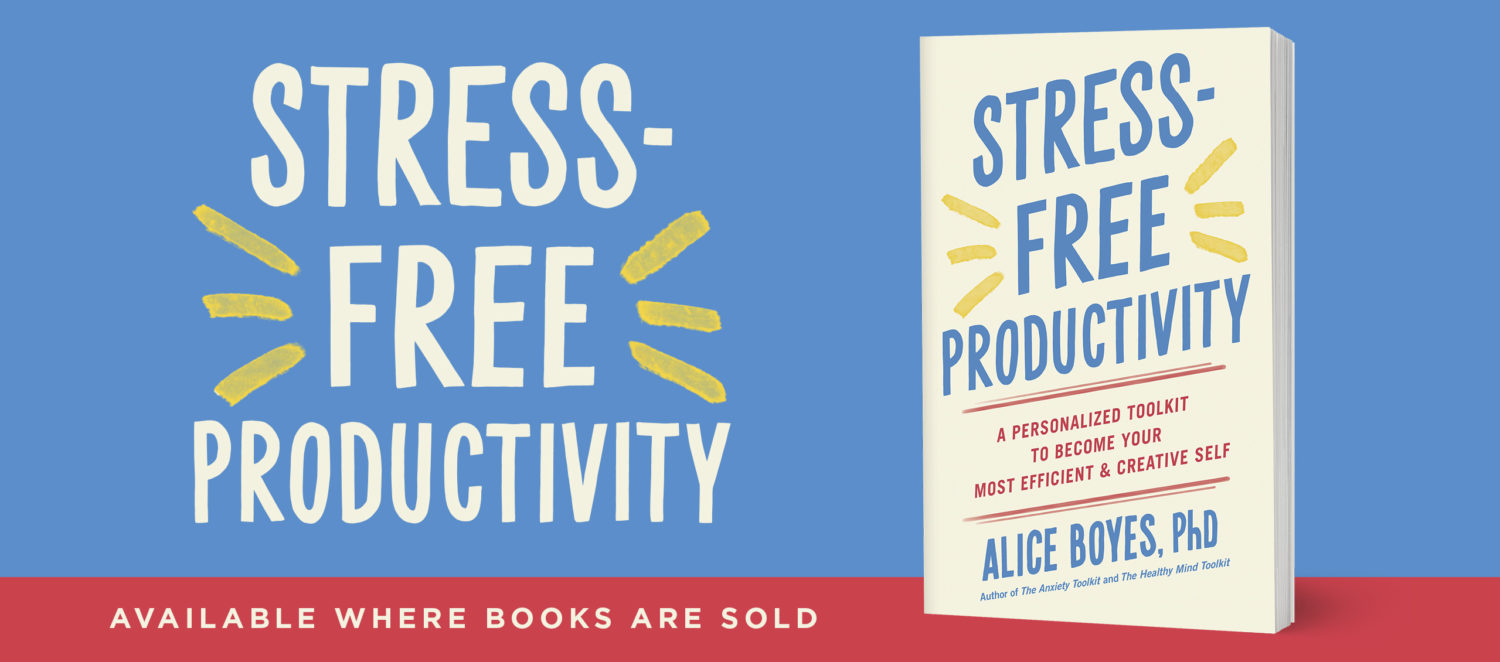Personalized Plan for Coping with Low Mood or High Anxiety
If you like this post, but need more help for coping with low mood and anxiety, there are many more simple, practical tools like this one in my book, The Anxiety Toolkit.
Studies have shown that when people have too many options, they avoid making a decision.
If you know a lot of strategies for managing your mood/anxiety, it can get confusing as to which one to pick & you might end up just not picking anything.
One of my clients gave permission for me to share her Personalized Plan for Times of Low Mood or High Anxiety.
My general rule of thumb is that there should be a max of 6 choices.
The client picked her favorites from all the strategies she’d tried over the course of her therapy. She then tested the plan to check it was adequate.
(I’ve added the examples and explanations myself so blog readers will understand the techniques. The client’s actual plan includes just the sections in bold.)
Things I Can Do When My Anxiety Is High. (Max of 6 choices.)
Pick and execute 1 of the following.
1. Vocalize thoughts using the “I’m having the thought that…” format.
For example, say out loud to self
“I’m having the thought that I need to start a diet.” “I’m having the thought that I never succeed at diets.” I’m having the thought that I have no willpower.”
How it helps: Helps you get observer perspective on your thoughts so you can look “at” your thoughts rather than “from” your thoughts.
Belongs to a category of techniques called “Defusion” techniques that help defuse the grip of negative thoughts.
2. Take 1 Problem Solving action
3. Do 1 activity mindfully.
e.g., take a mindful shower and pay attention to all the sensory sensations of showering. When other thoughts enter your mind, gently bring your thoughts back to the sensory experience of showering.
How it works: Helps you practice regulating your attention. Also helps you become aware of when your thoughts are drifting away from the present moment to the past or future. Gives you a rest from ruminating.
4. Do free mindfulness audio from mindfulselfcompassion.org.
5. Imagine feared situation in a different color or with a cartoon appearance.
How it works: This is another Defusion technique.
6. Use “Bad News Radio”
Adopt the character of a radio announcer and give a forecast about all your negative predictions in a cartoonish radio announcer voice.
For example, Welcome to Bad News Radio for Mon 13th Feb. We’re predicting grey and cloudy skies for the rest of the week, and that when (name) gets to the party she’s going to tonight everyone will give her dirty looks because they wish she wasn’t there. We’re forecasting that (name) will be so depressed by this she’ll stay in bed the rest of the week, not hand in her essay and fail her course. That’s your Bad News Radio Update for this hour. More worse news next hour.”
How it works: Defusion.
Things I Can Do When My Mood Is Low. (Max of 6 choices but the client only picked 5).
Pick and execute 1 of the following.
1. Thank You Mind
Say “Thank You Mind” in response to any of your low mood thoughts. If another low mood thought comes, repeat “Thank You Mind” again. Vocalize it rather than saying it silently. Not intended to be said in a sarcastic tone.
For example,
I never do as well @ uni as I should. > Thank you mind.
How it works: Defusion.
2. Do a pleasure activity.
3. Have an early night or a 90 min nap
4. Write a grateful thought in diary.
5. Do a few yoga stretches.
.
How to Road Test It
Try out your plan for a period of time e.g., a month.
At the end of each day, record a couple of quick numbers on your diary or calendar.
– If you made use of the plan during that day (0 times or another number)
– If you missed an opportunity to make use of the plan when it would’ve been a good idea (0 times or another number).
Tweak your plan as needed when the testing period is up. You can also tweak it later if you want to switch in/out some strategies for variety.



